
Will Carney is a freshman at NAI who loves to learn about rocketry and spaceflight. This is his first year writing for NA Eye News. He also enjoys playing...
November 22, 2021
Spaceflight has created a lot of buzz throughout the world and has many competitors pushing each other to go even further. Companies like SpaceX, Blue Origin, ULA, NASA, and Rocket Lab are developing more advanced rockets that will change the industry forever.
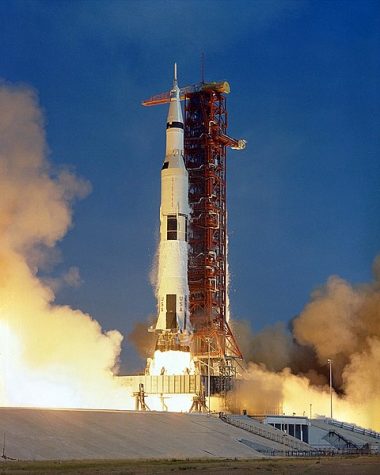
At first, NASA was the only American spaceflight program and was competing with the Soviet Union during the Cold War which is commonly known as the “space race.”The first rocket to carry a human to space was the Soviet Union’s Vostok 1, which carried cosmonaut Yuri Gagarin into a 187 mile orbit. He stayed for one orbit in space (1 hour and 48 minutes) according to space.com.
The first American rocket to carry a human to space was the Mercury Redstone rocket. Alan Shepard was on top in the Freedom 7 capsule and this mission lasted only 15 minutes and 22 seconds according to nasa.gov.
Just 8 years later, the mighty Saturn V launched humans to the moon. Which, to this day, is still the most powerful and largest rocket ever with 34 million newtons (7.6 million pounds) of thrust, according to nasa.gov. However, this record may not stand for much longer. In the wake of the Apollo and Space Shuttle programs, NASA has been joined by several other spaceflight companies in making huge strides in rocketry and space exploration.
NASA is currently developing a super-heavy lift rocket called the Space Launch System, or SLS. According to BBC, SLS Block 1 exerts 8.8 million pounds of thrust which will inject the Orion capsule into a lunar orbit to eventually dock to the thought out lunar gateway. The lunar gateway is a planned lunar orbital laboratory which will be visited by various spacecraft. The gateway will make it much easier to land on the lunar surface. One of those spacecraft visiting the gateway will be Orion which is a next generation capsule being developed by NASA.
Also, NASA recently landed the Perseverance Rover on Mars in February 2021. Under its belly, Perseverance carried
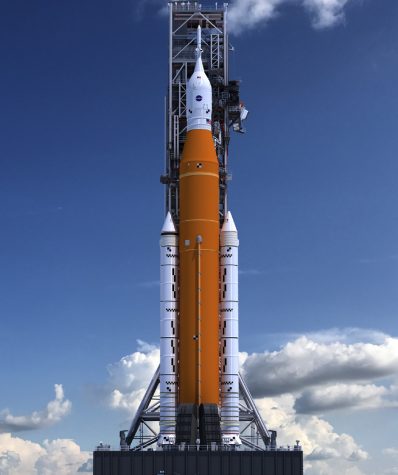
a small helicopter named Ingenuity that has already made more than 10 flights. Ingenuity will scout out the terrain to look for good places for Perseverance to explore .
Perseverance is collecting rock samples which it will later drop on the ground for a future mission to return the samples back to earth sometime in the 2030s. This should give scientists a better idea of the Martian surface.
NASA has also been developing the James Webb Space Telescope, the successor to the Hubble Space Telescope, which is expected to launch in December this year. According to nasa.gov, the telescope will orbit the Sun 1 million miles away from Earth and will use a huge golden mirror to reflect light and take pictures.
There are many more things that NASA is doing but there is simply too much to talk about. In the past 10 years or so, NASA has been giving contracts to aerospace companies like SpaceX, ULA, Boeing, and more which are advancing the spaceflight program, because of the huge burden the work they are doing is.
Elon Musk’s SpaceX is among the most well known spaceflight companies and for good reason because of their rapid and game-changing progress.
The first rocket produced was the Falcon 1, which flew five times and made it into orbit on its fourth launch attempt.
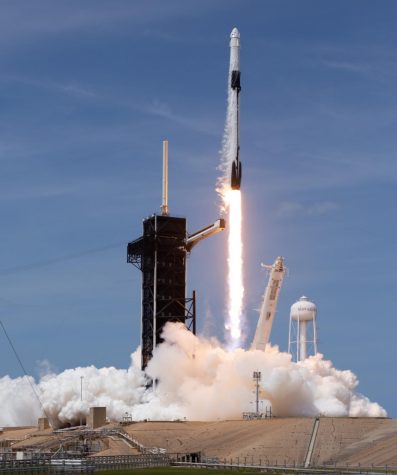
Since then, SpaceX has developed the prestigious Falcon 9 rocket, which has launched over 120 times. It is 3.7 meters wide, 229.6 feet tall, and can deliver 22,800 kilograms to low-earth orbit and 8,300 kilograms to geostationary transfer orbit of payload capacity per spacex.com.
Both Falcon 9 and Falcon Heavy use sea-level Merlin engines on the first stage and Merlin vacuum engines on the second stage. What makes this rocket unique is that it can propel the second stage and payload into space, separate the first stage, boost back burn, and propulsively land on a drone ship in the Atlantic Ocean or on land in Florida, close to the launch site. All of this happens while the work-horse second stage puts the payload into orbit.
SpaceX has also developed the Falcon Heavy rocket which has 3 cores, a second stage, and a payload space. Falcon Heavy is 229.6 feet tall (the same as Falcon 9), 12.2 meters tall, and produces 5 million pounds of thrust. According to spacex.com, it can deliver 140,660 pounds to low-earth orbit and 58,860 pounds to geostationary transfer orbit, currently making it the world’s most powerful rocket . This rocket is more unique than the Falcon 9 because it can propulsively land all three of its first stage cores.
Although SpaceX has 2 impressive rockets, they continue to work on new technologies, including a superheavy lift rocket called Starship. Starship has different variants including Lunar Starship, Crew Starship, Cargo Starship, Tanker Starship, and potentially a deep space Starship. Starship is under development, but will soon dethrone the most powerful rocket in the history of spaceflight, the Saturn V.
Besides Lunar Starship, Starship variants will be made of stainless steel contrary to the original plans of carbon fiber because of how much cheaper and quicker to produce it is. Starship will be fully reusable, 394 feet tall, 9 meters wide, and will be able to deliver over 100 tons of payload to low earth orbit according to spacex.com.
All Starship variants will have the new Raptor engines, which became the first full-flow staged combustion rocket engine to fly in 2018. A full-flow staged combustion rocket engine utilizes a twin-shaft staged combustion cycle and uses fuel and oxidizer-rich pre burners so that both propellants go through the turbines and then the nozzle, making the engine extremely efficient.
Starship will have a huge payload bay which will hopefully someday carry humans to Mars. Tanker, Crew, and Cargo Starship will mostly have the same design except for a few things like cargo bay, or crew space changes while Tanker
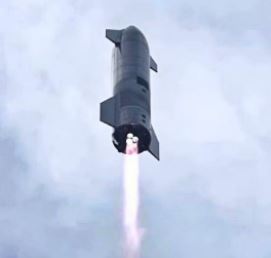
Starship will only have fuel and no crew or payload space. The reason for a Tanker Starship is because the Starship will need to dock to each other in orbit in order to refuel and carry out further missions to the Moon, Mars, and beyond.
Lunar Starship will look much different than the other versions because it will be white in color, have huge solar panels covering about one sixth of the exterior, and feature smaller landing engines near the top of the rocket. Like the name says, Lunar Starship will go to the moon for NASA missions as SpaceX won the Human Landing System contract from NASA with a 2 billion dollar bid in April of 2021.
In total, Starship has two stages. The bottom stage, called Superheavy, will have over 30 raptor engines and will be 230 feet tall. SpaceX is planning to catch the booster in mid-air with robot arms prior to landing for the benefit of creating much faster turnaround times.
The upper stage called Starship will be 160 feet tall and will have 3 sea-level raptor engines and 3 vacuum raptor engines. The landing sequence is highly ambitious. The ship will fall through the atmosphere on its belly, with its huge flaps extended to slow the vehicle, return to an upright position under the power of engines, and smoothly touch down on a landing pad.
Development is currently happening in Boca Chica Village, Texas which is about 20 miles away from Brownsville. For years to come, SpaceX will be one of the most successful spaceflight companies in the world.
Another prominent aerospace company is United Launch Alliance or ULA. ULA’s president and CEO Torey Bruno has headed the company since 2014.
United Launch Alliance specializes in complex and accurate orbits and has two rockets currently Delta IV, Atlas V plus one under development, Vulcan.
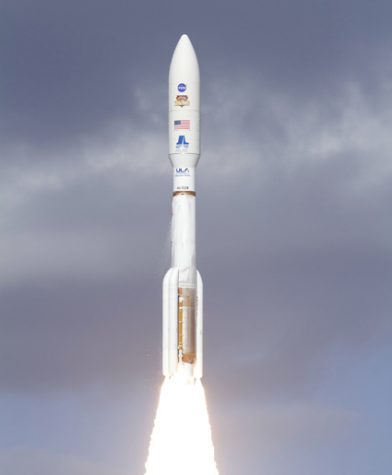
Atlas V has been flying since 2002 and is one of the most reliable in the launch market. Atlas V is expendable and is powered by a RD-180 engine with the upper stage powered by either one or two RL10 engines depending on the customer’s needs.
Atlas V burns liquid kerosene as a fuel, liquid oxygen as its oxidizer, and stands at 188 feet tall. Atlas V can launch 45,200 pounds to low earth orbit and 8,250 pounds to geostationary transfer orbit according to britannica.com.
Atlas V also carries the Boeing Starliner to the International Space Station for those missions.
Another ULA rocket, Delta IV, has two different variations, Delta IV Heavy and Delta IV Medium. Delta IV Medium has one RS-68 engine and can have four solid rocket motors while
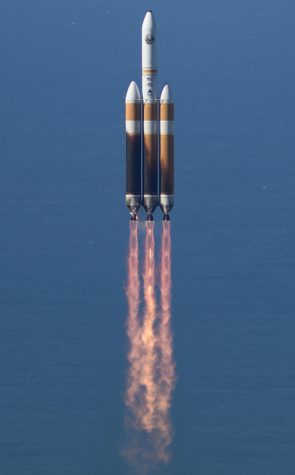
Delta IV has a cryogenic upper stage powered by an RL10B-2 engine. Delta IV Heavy stands at about 230 feet tall and can lift over 56,000 pounds to low earth orbit.
On the other hand, Delta IV Medium can lift over 22,000 pounds to low earth orbit.
ULA’s new up and coming rocket is Vulcan. Vulcan will be 5.4 meters wide, 202 feet tall, and can have either 0, 2,4, or 6 solid rocket boosters.
With 6 solid rocket boosters, Vulcan will be capable of lifting 60,000 pounds to low earth orbit and 30,000 pounds to geostationary transfer orbit per ulalaunch.com.
In 2014, ULA signed an agreement with Blue Origin to use their BE-4 engines on ULA’s Vulcan rocket. On the second stage, called Centaur, RL10 engines will accelerate the payload to orbit. In the future, ULA plans to try and recover the bottom stage engines because of how valuable they are.
Other than the engines, the rocket will be expendable, like ULA’s other rockets according to their website.
Blue Origin is a rocket company, based out of Texas since 2000, with one rocket flying and one under development. Their CEO is Amazon founder Jeff Bezos.
Blue Origin’s New Shepard rocket consists of a first stage, and crew capsule.
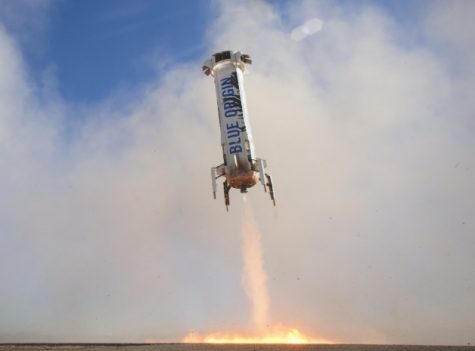
It is important to note that this launch vehicle is only capable of sub-orbital hops, and therefore is used for space tourism. In July 2021, New Shepard’s first crewed flight carried a crew of 4 people, Jeff Bezos himself, Bezos’ brother, Wally Funk, and a private citizen who won the seat on bid. More recently, Canadian actor William Shatner and a crew of three others flew to space for 11 minutes.
According to cnbc.com, New Shepard is 60 feet tall and produces about 110,000 pounds of thrust at liftoff.
The rocket is fully reusable and propulsively lands on a landing pad near the launch site. The first stage has ring and wedge fins to help stabilize and slow down the rocket prior to engine relight and landing.
New Shepard is liquid fueled and is powered by one BE-3 engine.
Blue Origin is currently in development of their orbital, heavy-lift rocket, New Glenn. According to blueorigin.com, New Glenn will be 322 feet tall and 7 meters wide. It will be able to lift about 99,000 pounds to low earth orbit and about 28,600 pounds to geostationary transfer orbit.
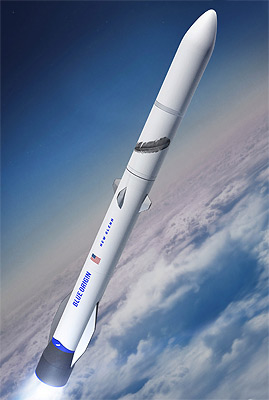
Blue Origin plans to have New Glenn’s first and second stage be reusable. The plan for this massive first stage is to have it land on a ship in the ocean after it powers the second stage and payload to orbit, like SpaceX’s Falcon 9. The first stage will be able to glide in the air to help fly back to the ship, hence, it is equipped with four fins for aerodynamic control, and two wing-like strakes to create lift and cross-range which will all help land New Glenn’s first stage.
After the second stage puts the payload into orbit, it will deorbit itself, reenter, and splashdown in the ocean to be used again.
New Glenn’s first stage is powered by seven BE-4 liquid oxygen and liquified natural gas engines. Similarly, the second stage has two BE-3U liquid hydrogen and liquid oxygen engines.
Another notable company is Rocket Lab based out of New Zealand. Rocket Lab has a small satellite launcher called Electron and a medium lift launcher called Neutron. By nasa.com classification, a small satellite launcher should only be capable of 4,400 pounds to low earth orbit at most.
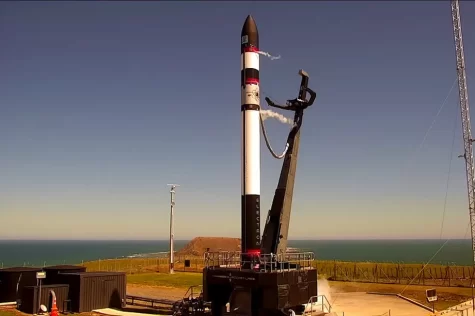
Electron is 59 feet tall, 1.2 meters wide, and made out of a carbon composite material. Electron’s oxidizer is liquid oxygen and uses liquid kerosene as its propellant.
Also, Electron has 2 main stages, but has a small kick stage. The kick stage is responsible for carrying rideshare satellites to different and precise orbits.
Electron is capable of 661 pounds to low earth orbit and has 9 Rutherford engines which are the world’s first 3D printed, electric-pump-fed rocket engines, according to rocketlabusa.com.

Electric Pump Fed means that the fuel pumps are electrically powered, so the input propellant is all used in the main combustion chamber, therefore no propellant is being used to drive the pumps, which ultimately conserves fuel.
Furthermore, the company claims the first stage will soon be reusable. The plan is to attach parachutes onto the first stage so that after it does its job getting the second stage and payload into space, it will deploy them and a helicopter will catch it in mid air before splashing down into the ocean.
The second stage is powered by a single Rutherford vacuum engine.
Rocket Lab’s next rocket, Neutron, is a medium-lift, two stage rocket. Neutron will be 131 feet tall, 4.5 meters wide, and will use liquid oxygen as an oxidizer and kerosene as its fuel.
Neutron will be capable of about 17,600 pounds to low earth orbit according to rocketlabusa.com.
Like many next-generation rockets, Neutron’s first stage will be reusable and will use propulsion to land on a platform in the ocean. Neutron is expected to make its first flight in 2024.
Of course there are so many other up and coming aerospace companies like Astra, Firefly, Virgin Galactic, and many others. It is extremely difficult competing in the spaceflight industry considering how many bidders there are on satellites, but it looks to be an easier ride ahead for these particular companies because of the leverage they have built for themselves.
With so much competition, people can expect to see new space stations being built in space, missions to the moon in the near future, and manned missions to mars potentially in the next 10-15 years. Some satellites can create better Wi-Fi on earth and carry some breakthrough experiments. Spaceflight unites many people across the world today and it is an extremely exciting time for it.

Will Carney is a freshman at NAI who loves to learn about rocketry and spaceflight. This is his first year writing for NA Eye News. He also enjoys playing...
Carol • Nov 22, 2021 at 10:31 pm
Competition will advance space travel and exploration while saving the government trillions of dollars.
Our country will win the coveted title of ‘first’ in space.
Norris Myers • Nov 22, 2021 at 4:46 pm
So much research into this article… what an exciting future for Spaceflight! It was interesting for me to hear some names and and types of rockets from past years and to get a glimpse of what might lie ahead. Thank you for your insight, Will Carney!